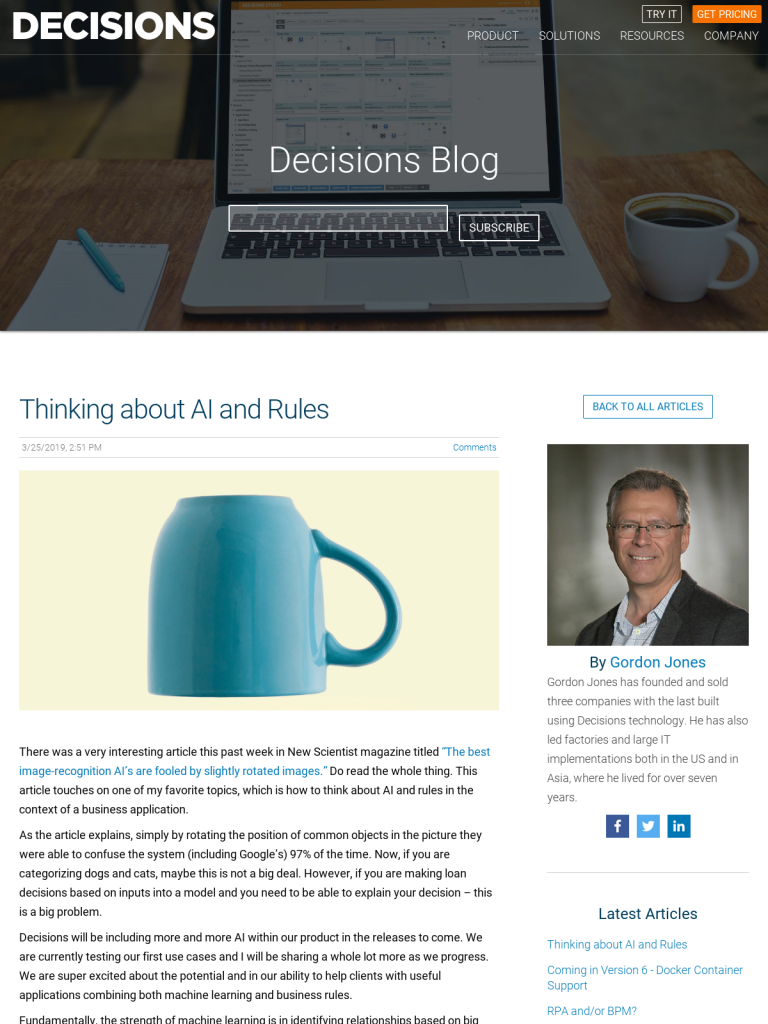Thinking about AI and Rules
Blog: The Data Center

There was a very interesting article this past week in New Scientist magazine titled “The best image-recognition AI’s are fooled by slightly rotated images.” Do read the whole thing. This article touches on one of my favorite topics, which is how to think about AI and rules in the context of a business application.
As the article explains, simply by rotating the position of common objects in the picture they were able to confuse the system (including Google’s) 97% of the time. Now, if you are categorizing dogs and cats, maybe this is not a big deal. However, if you are making loan decisions based on inputs into a model and you need to be able to explain your decision – this is a big problem.
Decisions will be including more and more AI within our product in the releases to come. We are currently testing our first use cases and I will be sharing a whole lot more as we progress. We are super excited about the potential and in our ability to help clients with useful applications combining both machine learning and business rules.
Fundamentally, the strength of machine learning is in identifying relationships based on big data. What this article highlights is that even with big data, there are going to be situations that your data set has not seen and would never have been included in an AI training set, thus returning false results. What to do?
Here are three points to keep in mind as you look to integrate machine learning with any business application.
- Probability or Exactness? Does your application require exactness or is a high probability good enough? Marketing promotions are usually exercises in probability, meaning that the cost of a “mistake” in promoting to an unqualified target is low. If you need exactness however, a decision tree or other rule based model is the way to go.
- Rule Wrapper: If you have a model that works fairly well but you want to put some bounds on the output, putting a “Rule Wrapper” around your ML model makes a lot of sense. In this way, you can always control the output based on parameters that you control.
- ML model determines Rules: Perhaps you have built a great neural network model but you need to explicitly understand or explain the answers that the model provides. One way to accomplish this is to run a “sensitivity analysis” on the inputs, or range all of your inputs and capture the output to create a rule based model from a neural network model.
If you would like to talk about your specific use case or how to accomplish any of the above, please reach out to us at sales@decisions.com.
The post Thinking about AI and Rules appeared first on Decisions Blog.
Leave a Comment
You must be logged in to post a comment.








